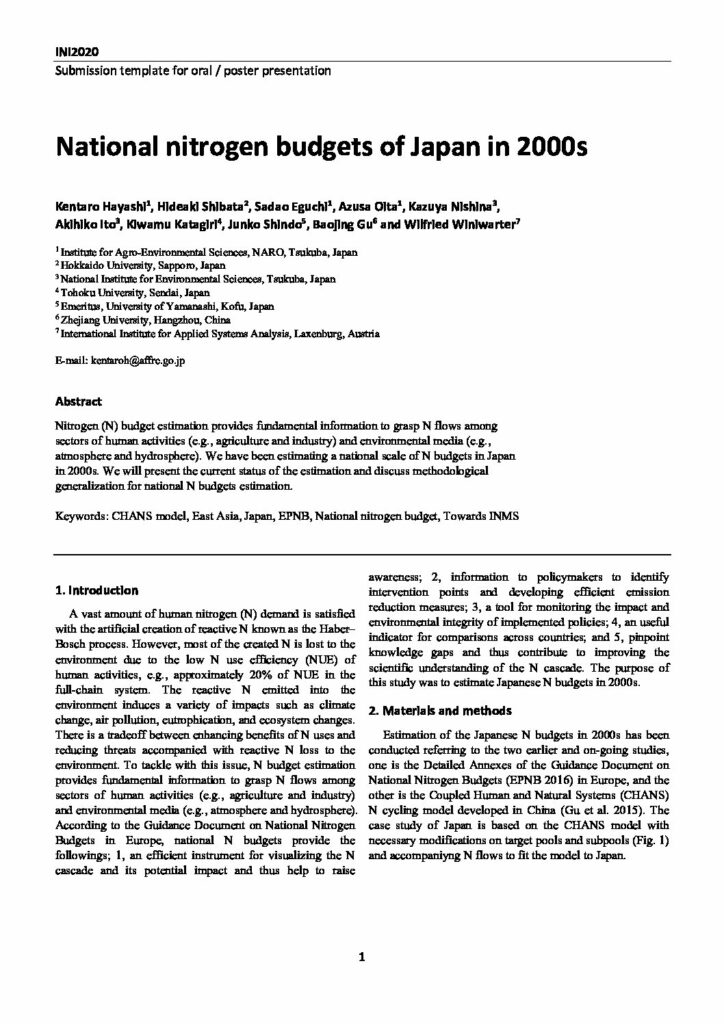National nitrogen budgets of Japan in 2000s

Nitrogen (N) budget estimation provides fundamental information to grasp N flows among sectors of human activities (e.g., agriculture and industry) and environmental media (e.g., atmosphere and hydrosphere). We have been estimating a national scale of N budgets in Japan in 2000s. We will present the current status of the estimation and discuss methodological generalization for national N budgets estimation.
A vast amount of human nitrogen (N) demand is satisfied with the artificial creation of reactive N known as the Haber– Bosch process. However, most of the created N is lost to the environment due to the low N use efficiency (NUE) of human activities, e.g., approximately 20% of NUE in the full-chain system. The reactive N emitted into the environment induces a variety of impacts such as climate change, air pollution, eutrophication, and ecosystem changes. There is a tradeoff between enhancing benefits of N uses and reducing threats accompanied with reactive N loss to the environment. To tackle with this issue, N budget estimation provides fundamental information to grasp N flows among sectors of human activities (e.g., agriculture and industry) and environmental media (e.g., atmosphere and hydrosphere). According to the Guidance Document on National Nitrogen Budgets in Europe, national N budgets provide the followings; 1, an efficient instrument for visualizing the N cascade and its potential impact and thus help to raise awareness; 2, information to policymakers to identify intervention points and developing efficient emission reduction measures; 3, a tool for monitoring the impact and environmental integrity of implemented policies; 4, an useful indicator for comparisons across countries; and 5, pinpoint knowledge gaps and thus contribute to improving the scientific understanding of the N cascade. The purpose of this study was to estimate Japanese N budgets in 2000s.
